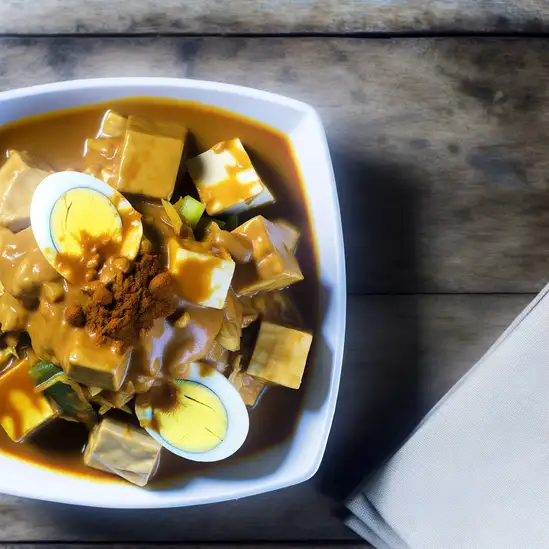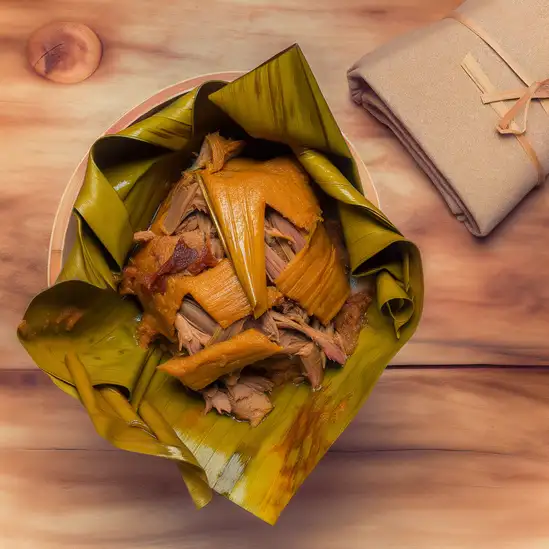



If you ever find yourself craving a place where the ocean’s roar feels like a heartbeat and the sunsets paint the sky in fiery oranges and pinks,Uluwatu is where you want to be. This coastal town in Bali isn’t just about the stunning cliffs and waves—it’s got this laid-back,soulful vibe that wraps around you the moment you arrive. Imagine walking along rugged paths lined with frangipani trees,the salty breeze mixing with the faint scent of incense from nearby temples. It’s a place where nature and spirituality blend seamlessly,and every corner invites you to slow down and soak it all in. The cliffs here are dramatic,dropping sharply into the turquoise sea below,and if you’re into surfing,the waves are world-class,drawing surfers from all over. But even if you’re not riding the waves,just sitting at a cliffside café with a fresh coconut in hand,watching the surfers dance with the ocean,feels like a little slice of magic. At night,the famous Uluwatu Temple hosts traditional Kecak fire dances that echo with chanting voices and flickering flames,creating an unforgettable cultural experience. What really makes Uluwatu special is its balance—wild and serene,ancient and alive. The local warungs serve up spicy sambal and fresh seafood that’ll make your taste buds sing,while the friendly locals share stories with a warm smile. It’s a place that invites you to connect—with nature,culture,and yourself. Trust me,once you’ve felt Uluwatu’s rhythm,it stays with you long after you leave.
The information on this page is currently being reviewed by Tripkliq and should be used as a guide only
Eng word: Hello
Eng pronunciation: HAH-loh
Local language: Halo
Eng word: Goodbye
Eng pronunciation: suh-LAH-maht TING-gahl
Local language: Selamat tinggal
Eng word: Thank you
Eng pronunciation: teh-REE-mah KAH-see
Local language: Terima kasih
Eng word: How much
Eng pronunciation: buh-RAH-pah
Local language: Berapa
Eng word: Toilet
Eng pronunciation: TOY-let
Local language: Toilet
Eng word: Help me
Eng pronunciation: TOH-long SAH-yah
Local language: Tolong saya
Eng word: Yes
Eng pronunciation: YAH
Local language: Ya
Eng word: No
Eng pronunciation: TEE-dahk
Local language: Tidak
Eng word: Excuse me
Eng pronunciation: puhr-MEE-see
Local language: Permisi
Uluwatu Temple, or Pura Luhur Uluwatu, is one of Bali's nine key directional temples. It is renowned for its stunning cliff-top location, offering breathtaking views of the Indian Ocean.
The Uluwatu Temple showcases traditional Balinese architecture, with intricate carvings and statues that reflect the island's rich cultural heritage.
The Uluwatu Temple is famous for its nightly Kecak dance performances, a traditional Balinese dance that tells the story of the Ramayana through chanting and elaborate movements.
Uluwatu Temple is believed to have been built in the 11th century by the Javanese sage Empu Kuturan. It holds significant spiritual importance for the Balinese people.
The temple is home to a large population of monkeys, which are considered sacred and are believed to guard the temple from evil spirits.
Uluwatu is a world-renowned surfing destination. The area gained international fame in the 1970s when it was featured in the surf film 'Morning of the Earth.'
Uluwatu hosts various cultural festivals throughout the year, including the Odalan ceremony, which is a temple anniversary celebration featuring traditional music, dance, and offerings.
The cliff-top location of Uluwatu Temple provides panoramic views of the Indian Ocean, making it a popular spot for tourists to watch the sunset.
The waters around Uluwatu are rich in marine life, making it a popular spot for snorkeling and diving. The coral reefs and diverse marine species attract underwater enthusiasts from around the world.
In Uluwatu, the most common Power Adaptor is Type C, Type F.



A traditional Balinese dish of roasted suckling pig, marinated with a mixture of spices and served with rice and vegetables.

A Balinese version of satay made from minced meat mixed with grated coconut and spices, wrapped around bamboo sticks and grilled.

A traditional mix made from vegetables, coconut, and minced meat, often served as a side dish in Balinese meals.

A mixed rice dish that includes a variety of side dishes such as meats, vegetables, peanuts, eggs, and fried shallots.

A salad of boiled vegetables, tofu, and hard-boiled eggs, served with a peanut sauce dressing.

A Balinese dish of chicken that is marinated with a blend of spices, wrapped in banana leaves, and slow-cooked until tender.

Slow-cooked duck that is marinated with a rich blend of spices and wrapped in banana leaves, resulting in tender and flavorful meat.

Traditional Balinese snacks or cakes made from rice flour and coconut, often served during ceremonies and festivals.
If you find yourself wandering through Kota Denpasar,you’ll immediately notice its lively heartbeat—a city that hums with everyday life yet carries a deep cultural rhythm beneath the surface. It’s not the polished tourist hub like southern Bali,but that’s exactly what makes it so captivating. The streets buzz with scooters weaving through markets where the scent of fresh spices mingles with the earthy aroma of tropical fruits. Vendors call out in warm,melodic tones,inviting you to taste something new or simply share a smile.
Denpasar feels like the authentic soul of Bali,where tradition and modern life dance side by side. You’ll see women in vibrant kebayas carrying offerings to temples,while nearby,young artists sketch murals that splash color onto old walls. The city’s pulse is both chaotic and comforting,with the clatter of street food stalls serving up fragrant nasi campur and the gentle chime of temple bells weaving through the air.
What’s truly special is how Denpasar invites you to slow down and soak in its layers—whether it’s the warmth of a local’s greeting,the taste of freshly brewed Balinese coffee,or the sight of intricate carvings on ancient temples tucked between bustling streets. It’s a place where you don’t just visit; you become part of the daily story,feeling the city’s spirit in every step you take.
If you find yourself wandering through Kota Administrasi Jakarta Pusat,you’ll immediately notice the pulse of a city that’s both historic and buzzing with modern energy. It’s a place where colonial-era buildings stand shoulder to shoulder with sleek skyscrapers,creating a fascinating blend of old and new. Walking down the streets,you can almost hear the echoes of history mingling with the chatter of office workers and street vendors. The air carries a mix of aromas—from the rich,spicy scent of street food stalls grilling satay to the faint,comforting smell of freshly brewed kopi from tiny warungs tucked in corners.
What really makes Jakarta Pusat special is its vibrant character. It’s the heart of the city’s administrative and cultural life,so you’ll find a lively mix of people—government officials,artists,students,and families—all weaving their stories into the urban fabric. The bustling markets,like Pasar Baru,invite you to haggle over colorful textiles and local snacks,while nearby museums and galleries offer a quiet retreat into Indonesia’s rich heritage.
There’s a rhythm here that’s both fast-paced and inviting. Whether you’re sipping a sweet es cendol under the shade of a tree in Merdeka Square or catching the golden light reflecting off the National Monument at dusk,Jakarta Pusat feels alive in a way that’s deeply human and endlessly fascinating. It’s a city that invites you to slow down,look around,and soak in the layers of life unfolding all at once.
Imagine stepping into a city where sleek skyscrapers meet lush greenery,and every corner hums with a vibrant energy that’s both modern and deeply rooted in tradition. That’s Singapore for you—a place where the air carries the fragrant mix of blooming orchids and sizzling street food,and the streets buzz with a blend of languages and laughter. Walking through neighborhoods like Chinatown or Little India,you’ll catch the rich aromas of spices mingling with the sweet scent of tropical fruits,inviting you to explore further.
What’s truly captivating about Singapore is how effortlessly it balances the fast-paced pulse of a global hub with pockets of serene beauty. You can be wandering through the futuristic Gardens by the Bay one moment,marveling at the towering Supertrees glowing softly at dusk,and the next,find yourself savoring a bowl of laksa or chili crab at a bustling hawker center,surrounded by locals chatting animatedly. The city’s character shines through its people—warm,diverse,and proud of their heritage,yet always welcoming.
There’s a rhythm here that’s both energizing and comforting. Whether you’re cycling along the waterfront,catching a sunset over Marina Bay Sands,or simply sipping kopi in a cozy café,Singapore invites you to slow down and soak in its unique blend of cultures,flavors,and sights. It’s a city that surprises you with its layers,making every visit feel like a new discovery.
Manila is this vibrant,bustling heart of the Philippines that grabs you the moment you step off the plane. There’s an energy here that’s both chaotic and warm,like the city is alive and breathing with stories waiting to be discovered. Walking through its streets,you’ll catch the scent of sizzling street food mingling with the salty breeze from Manila Bay. The soundscape is a lively mix of jeepneys honking,street vendors calling out their wares,and the occasional laughter spilling from a nearby sari-sari store.
What makes Manila truly special is its rich tapestry of history and culture woven into everyday life. You can wander through Intramuros,the old walled city,and feel the echoes of Spanish colonial days in the cobblestone streets and centuries-old churches. Then,just a few blocks away,modern skyscrapers rise,showcasing the city’s dynamic spirit. The people here are incredibly warm and welcoming,always ready to share a story or recommend their favorite spot for halo-halo,a sweet,icy treat that’s perfect for cooling down in the tropical heat.
Manila’s charm lies in its contrasts—the old and new,the quiet moments in hidden courtyards and the lively buzz of night markets. It’s a place where you can savor rich Filipino flavors,dive into vibrant festivals,and feel the pulse of a city that’s constantly evolving but never loses its heart. If you want a trip that’s full of life,color,and genuine warmth,Manila’s waiting with open arms.
Bangkok is one of those cities that grabs you the moment you step out into its bustling streets. There’s this electric energy in the air—a mix of honking tuk-tuks,sizzling street food stalls,and the chatter of locals weaving through markets. The city feels alive,like it’s constantly moving and breathing,yet somehow it balances this chaos with moments of serene beauty,like the golden spires of temples catching the afternoon sun or quiet canals reflecting the sky.
Walking through Bangkok,you’ll be hit by a whirlwind of scents:fragrant jasmine from flower vendors,the sharp tang of lemongrass and chili from street carts,and the sweet aroma of mango sticky rice tempting you at every corner. The colors are just as vivid—neon signs flicker alongside traditional wooden shophouses,and monks in saffron robes glide past modern skyscrapers. It’s a city where old and new dance together effortlessly.
What really makes Bangkok special is its warmth and openness. The people here have a genuine kindness that shines through,whether you’re bargaining at Chatuchak Market or sharing a laugh over a bowl of spicy boat noodles. The culture is rich and layered,from the intricate rituals at Wat Pho to the lively festivals that light up the streets. Visiting Bangkok feels like stepping into a story that’s still unfolding,full of surprises and moments that stay with you long after you leave.
Kuala Lumpur feels like a vibrant heartbeat pulsing through the heart of Malaysia—where tradition and modernity dance effortlessly together. The moment you step into the city,you’re greeted by the towering silhouettes of the Petronas Twin Towers piercing the sky,their glass facades shimmering against the tropical sun. But it’s not just the skyline that captivates you; it’s the lively street scenes below. The air buzzes with the chatter of street vendors,the sizzle of satay grilling over open flames,and the sweet aroma of pandan and lemongrass wafting from bustling food stalls.
Walking through neighborhoods like Bukit Bintang or Chinatown,you’ll find a kaleidoscope of colors and sounds—vibrant markets brimming with spices,textiles,and handcrafted trinkets,while the calls to prayer from nearby mosques blend harmoniously with the hum of city life. The city’s rich cultural tapestry is woven from Malay,Chinese,and Indian influences,creating a unique blend you can taste in every bite of nasi lemak or teh tarik.
What I love most is how Kuala Lumpur never feels rushed. Whether you’re sipping kopi at a roadside stall or wandering through the lush greenery of the KL Forest Eco Park,there’s a warm,welcoming energy that invites you to slow down and soak it all in. It’s a city that surprises you at every turn—full of contrasts,flavors,and stories waiting to be discovered.
Vendors on the beach sell souvenirs, drinks, or snacks at highly inflated prices, targeting unsuspecting tourists.
Money changers offer attractive exchange rates but shortchange tourists by using sleight of hand or hidden fees.
Scammers pose as parking attendants and charge tourists a fee to park in public or free parking areas.
Unlicensed guides offer tours but provide little value or abandon tourists after taking payment.
Tourists are charged for pre-existing damage to rented motorbikes or are forced to pay inflated repair fees for minor scratches.
Some restaurants or beachside vendors charge inflated prices, especially if tourists don’t check the menu beforehand.
Unmetered taxis or drivers without apps charge exorbitant fares, especially for short distances.
Rented scooters are stolen (sometimes by the rental company itself) and tourists are forced to pay for a replacement.
Tourists are accused of damaging rented surfboards and are forced to pay high repair fees, even if the damage was already present.
Scammers sell fake or overpriced tickets to popular attractions like Uluwatu Temple or Kecak Dance performances.
Indonesia has very strict drug laws, and Uluwatu is no exception. The possession, use, or trafficking of illegal drugs can result in severe penalties, including long prison sentences and even the death penalty. Tourists should avoid any involvement with illegal drugs and be aware that even small quantities can lead to serious legal consequences.
In Uluwatu, Indonesia, smoking is generally allowed in outdoor areas, but it is prohibited in many indoor public spaces such as restaurants, bars, and public transportation. There are designated smoking areas in some public places. Tourists should look for 'No Smoking' signs and adhere to local regulations to avoid fines.
Vaping is subject to similar regulations as smoking in Uluwatu. It is generally allowed in outdoor areas but prohibited in indoor public spaces. Some establishments may have specific rules regarding vaping, so it is advisable to ask for permission before vaping indoors.
What are other people saying about Uluwatu?
Recent Social posts about Uluwatu
There is nothing to show you for now.